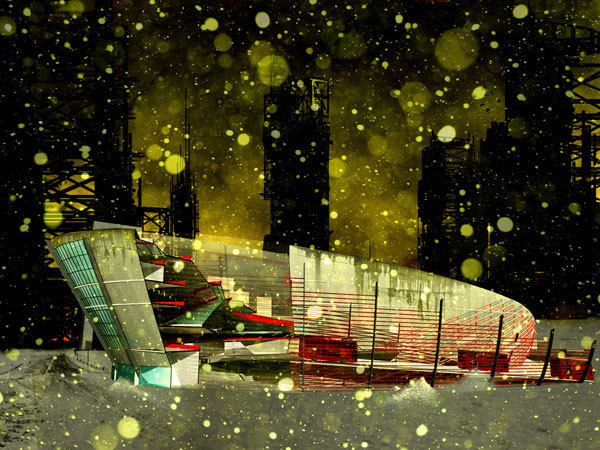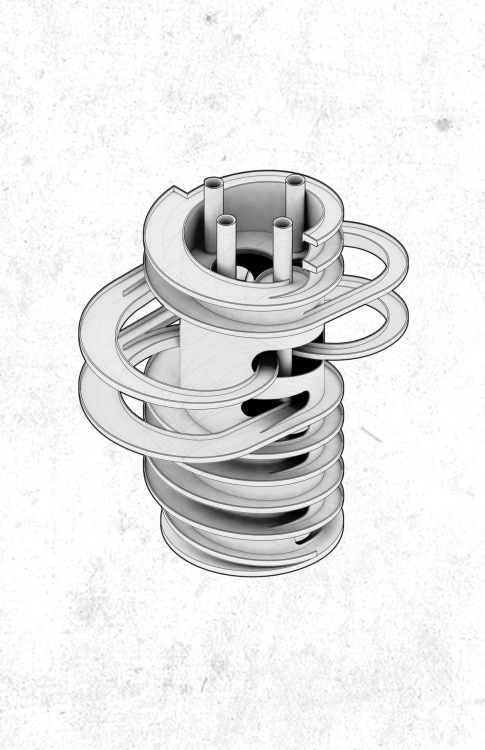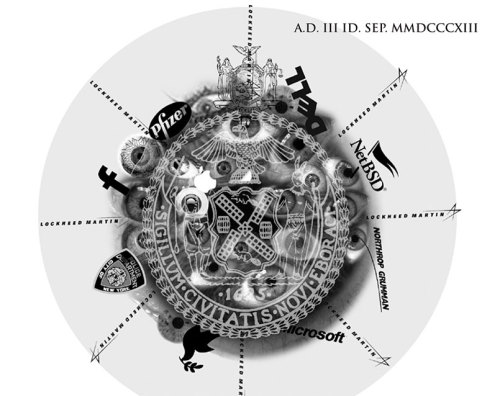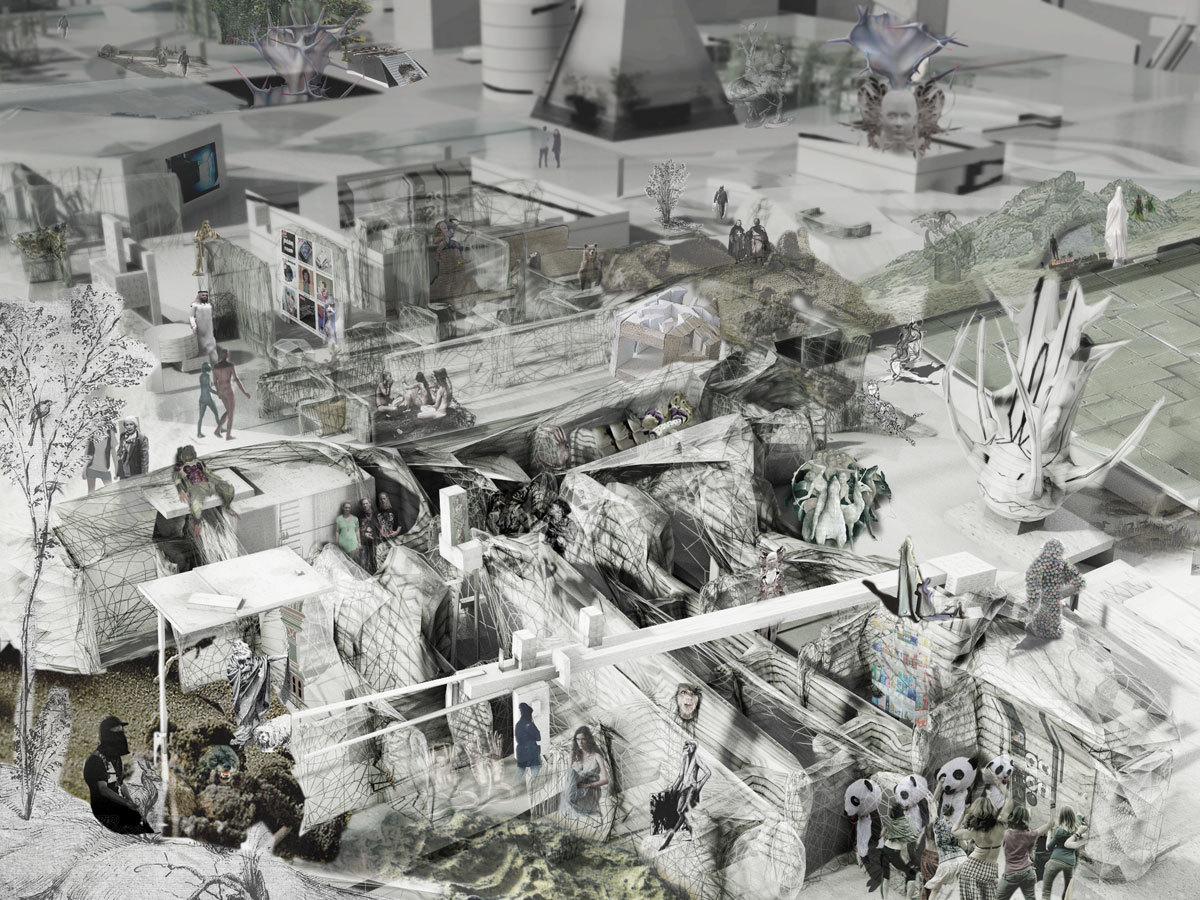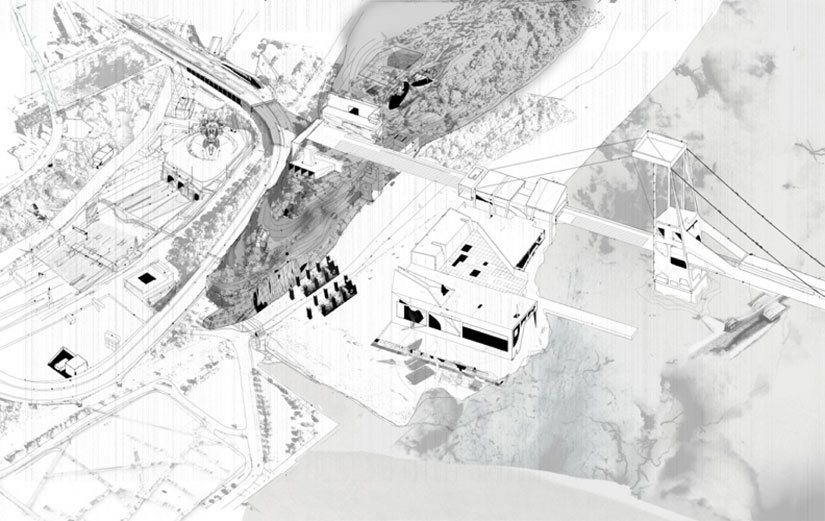Uneven Growth: Hong Kong 2047
Columbia University
Graduate School of Architecture, Planning, and Preservation
Network Architecture Lab
Instructor: Kazys Varnelis, Ph.D.
Associate: Jochen Hartmann
This studio parallels and informs the Uneven Growth exhibition opening at the Museum of Modern Art in November 2014. The intent of both studio and exhibition is to tackle the complex condition of the megacity and the growing economic and social inequality within it.
As in the exhibition, the Network Architecture Lab’s physical site is Hong Kong and the temporal site is the year 2047. At this point the “One Country, Two Systems,” doctrine that began in 1997 as the former British colony was handed over to the People’s Republic of China is scheduled to run out, and the city is scheduled to lose its status as an exceptional zone within China. We hypothesize that Hong Kong will not disappear, but that instead China will.
We set out to ask how architecture can address uneven growth in Hong Kong and other megacities. Rather than finding strategic solutions, we intend to identify the conditions and location in which to operate.
This studio is conceptual, aimed at developing arguments and polemics, but it sets out to do so using the tools of the architect. We propose architecture based on rigorous programming rather than generative designs or cool forms, architecture as a system of thought that makes abstract knowledge experiential, and conceptual thinking rational and understandable. We maintain that buildings can be constructions of thought in addition to material, conceptual machines that produce arguments and state positions.
Against a cynical world in which architects—and even studios in schools of architecture—have unabashedly agreed to serve authoritarian clients, we believe it is still possible to act. We reject neoliberalism’s doctrine that “There Is No Alternative” together with the self-expressive and performance-based models of design that dominate today as fundamentally incompatible with a future of extreme scarcity and declining populations. We ask not only how architecture can continue to function in this condition but also how it can play a transformational role in it. This studio’s central task is the invention of an ethics of design appropriate to a diminished future.
Students participating in this studio will be required to travel to Hong Kong for site visits. Travel will be funded through the school.
Scenario
“The liberal reward of labour, therefore, as it is the necessary effect, so it is the natural symptom of increasing national wealth. The scanty maintenance of the labouring poor, on the other hand, is the natural symptom that things are at a stand, and their starving condition that they are going fast backwards.”
-Adam Smith, An Inquiry into the Nature and Causes of the Wealth of Nations(1776)
Demographic projections show that the People’s Republic of China faces a brick wall created by the one-child policy. The demographic dividend created by the country’s large ratio of effective producers (working age adults) to effective consumers (children and the elderly) was a critical factor in the country’s growth to date. In 2013, however, a turning point was reached and the dividend’s growth rate turned negative, with China fairing now worse than many other countries. Within five years, yearly declines in the numbers of new workers fresh from school will become normal in China. Between 2016 and 2026 the population of workers aged 20 to 29 will drop by one quarter. By midcentury, 30% of the country’s population will be over 60. Without young workers dreaming of a better future, productivity will collapse. The result will be a suddenly poor country with a population of aging, bitter men, lacking sufficient pensions, welfare, or other means of supporting themselves. The central government will lose its grip on power, leading instead to a loose agglomeration of regional states, roughly akin to the Commonwealth of Independent States. In an effort to mask the collapse, the last PRC regime will describe the devolution as a natural process to recognize the differences within the country and will negotiate deals to include Taiwan, Mongolia, and post-DPRK North Korea into the commonwealth.
China’s crisis will parallel the condition of the vast majority of the world’s developed countries in which population growth has long past the tipping point. By midcentury, in addition to China, Japan, the European Union, the Commonwealth of Independent States, and the United States will all endure major population declines as both poor and rich avoid having too many children. Even stern government measures, such as Vladimir Putin’s 2006 attempt to offer 250,000 rubles (about $9,200 US) to women who will have a second child, will fail to change demographic destiny. Only the southern hemisphere will continue to grow, although by then the days of its growth will seem numbered too. Although population growth has become a problem lately, its seeming inevitability means that our economies rely on it. As populations decline, economies do as well.
In China, many interior cities, hastily filled with housing, factories, and starchitecture during the first decades of twenty-first century will empty, turning into Detroit-like ghost cities. In contrast, even with dwindling population rates, some coastal cities, having demanded Hong Kong-style autonomy from the diminished central government, will continue to thrive as active players in the global network of city-states. Since 2000, Hong Kong has had the distinction of being the country with the world’s second lowest fertility rate, Macao having the lowest, but with Hong Kong’s history of accommodating migrants from both within China and outside it, Hong Kong will be able to resume growth through migration from other countries in Southeast Asia as well as from Africa which is now becoming extensively colonized by Chinese capital. With its continuing role in global finance and manufacturing, Hong Kong is uniquely suited to lead the Chinese coastal city-states.
Hong Kong’s special status will spread, becoming a model for other megacities increasingly disconnected from the territories around them. Megacities will advocate for such special status within their larger countries, demanding greater autonomy, both economically and in terms of foreign policy. Such super-city-states will band together more formally over time, leaving their nation-states behind.
Even so, as in the rest of the world, inequality in Hong Kong will have grown almost insurmountable. As measured by the GINI coefficient, Hong Kong has the highest income inequality of any developed city in the world (and likely higher still since wealthy families in China habitually understate their income) and that coefficient has trended inexorably higher over the last two decades. Thus, it is unlikely that Hong Kong will deal with its own demographic crisis by allowing permanent immigration. Rather, the government will continue to expand the existing two-tier system, allowing poor immigrants to remain in the territory only on time-delimited visas while allowing the wealthy and skilled access to the system.
After the explosion of the demographic bomb, the world will face a new economic reality. Adam Smith observed that continuous economic growth has historically been predicated not only on growing technological efficiencies but also an increase in both population and the amount of raw materials available. Should any of those three variables flag, growth will cease. Under stagnant or falling populations, economies begin to contract and national wealth decreases and capitalism cannot be maintained in such circumstances. Smith himself never argued that growth in the West would be endlessly sustainable. On the contrary, he uses China as an example of a country much the same as five hundred years beforehand when Marco Polo first wrote about it. China, he explained, is a stationary state, going neither forward nor backward, but rather that had “acquired that full complement of riches which the nature of its laws and institutions permits it to acquire.” China’s past, then, is the world’s future.
The current economic crisis is a sign that capitalism is already in a stationary state and may soon be in an inexorable slide. Starting in the late 1990s, declining profit margins and radical technological changes led economies and financial markets into a pattern of booms and busts. Within the next decade, the world’s financial élite turned away from traditional investments, toward increasingly complex and short-term ways to extract wealth such as high speed trading and quantitatively driven arbitrage so as to ensure that returns would continue regardless of the direction of the market. As a hedge against the ever-present threat of currency collapses, the wealthy also turned to real estate in global cities, helping to drive prices skyward.
We hypothesize that, booms and busts notwithstanding, these trends will continue. Capitalism itself will have long come to an end, its highest levels being replaced by the algorithmic production of wealth wherever a loophole may still be found. Global city cores will remain strong as well. Highly defended, with a huge population of surplus labor to draw on for services, these will continue to be attractive destinations for the élite to work and play in (although only within a geographically dispersed strategy of global hedging that will include idyllic, defended exurban ecotopias should the shit finally really hit the fan).
Just as high finance will essentially be a game, everyday life for individuals worldwide will follow suit. By 2047, with income disparity high and social mobility low, those unlucky enough to be in the top 1% have little opportunity to better their conditions. Instead, as they eke out a living, they occupy themselves in a world that increasingly dominated by the logic of games. The governments of megacity-states, burdened with debt and facing radically limited budgets turn to tactical urbanism as the only possible way to make interventions in the city and to keep the populace away from the barricades.
Semester Plan
The semester will begin with a scenario planning exercise to hone what Hong Kong, 2047 will be like. Students will work individually or in teams to identify the drivers in society, technology, economics, ecology, and politics likely to impact the building over the next generation. These scenario plans will be communicated through the technique of architecture fiction. An exhibition exploring these scenario plans will be held in early March. After joining into teams to investigate possible sites, students will individually develop detailed proposals for their scenarios by the end of March. For the final review, students will develop responses to their scenarios.
Course Blog
Students will be expected to maintain and post regularly to a shared course Tumblr blog of their research and design progress. All student work will be posted online tagged by student name (firstname-lastname).
Engineering
Students will work with roving engineers from ARUP during the semester to address the structural and environmental systems in their designs. Even the most speculative of projects can benefit from the advice of these experts.
Representation
We propose that the ultra-realistic renderings commonly used in studios today are inappropriate, corresponding to what Mark Fischer has dubbed “capitalist realism,” a condition in which we are offered nothing but the present, delivered to us through the wonders of technology while we eagerly wait for the next thrill the system has to offer. Evacuated of any critical intent, such work only cements the false notion that modern technology has made communication transparent.
But more than that, if all architects produce a form of science fiction, then to paraphrase William Gibson, we need to remember that as we construct futures, all we have at our disposal is the moment that we are currently living in. The moment we construct a future it starts to age rapidly. Since the crash, along with the development of technologies that were formerly consigned to an endlessly deferred proximate future such as near-universal wireless Internet, locative media, tablet computing, and touchscreen interfaces, it seems that we have exhausted the era of the next new thing, of rapid technological and cultural development and obsolescence.
If Gibson is right and society is gripped by “future fatigue,” then envisioning the future through architecture forces us to follow Alex Galloway’s suggestion that “all media is dead media,” to understand that appropriate representational strategies that might resist capitalist realist representations might emerge out of a new understanding of what Gibson calls a “long now,” a temporally stretched condition out of which we can freely recombine material and representational motifs.
We will look at forms of representation immanent to our topic at hand, both the means of representation that architects and others working on these and similar projects would have used, but also the other means of representation of the day, e.g. schedules, traffic engineering plans, flowcharts, exploded axonometrics, and so on. Such diagrams not only offer rich territory to mine for representational strategies, their close study allows us to better understand how to think and represent visually.
Grading:
20% Attendance and Participation
Students are expected to attend studio sessions, be on time, and ready to discuss their work at every session. By this we mean that students should be in studio at least from 2 to 6 on Mondays, Wednesdays, and Fridays unless they have made other arrangements or are conducting research. Please let us know in advance. In no case will we meet with students who arrive after 4pm on that day unless they have prearranged the late arrival with us or there are mitigating circumstances.
Students are expected to participate in group discussions, to cooperate with other studio members by offering criticism, advice, and good spirit.
Students are expected to be at pin-ups and reviews on time with work ready to present. Students who are not ready at the beginning of the pin-up or review forfeit the right to receive criticism. Students are expected to contribute to pin-ups and reviews, both in terms of criticism and questions as well as by working in a team to ensure that rooms are ready to present in (adequate chairs, projectors, and so on).
40% Concept
Students will be graded on the originality and rigor of their concepts. All students need a coherent thesis in this studio.
Columbia teaches in English. There is help available for difficulties with the English language in the university, but lack of understanding is not an excuse.
40% Execution and Presentation
A good concept means little if it is poorly executed or presented. Presentation and execution are not trivial, nor are they mere “polish,” rather the choices made in presentation and execution should inform, and be informed by, the concept.
Students are expected to render and present their work clearly, succinctly, and elegantly.
Work should be thoroughly and completely represented.
